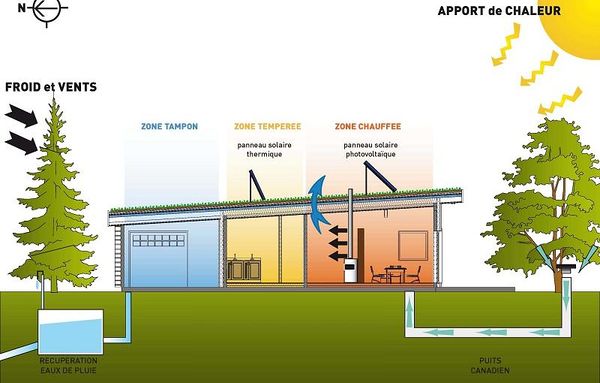Physics of sustainable development
Jump to navigation
Jump to search
Cours Physique et sociétés durables
Une option du Magistère de physique fondamentale et de L3 Physique de l'université Paris-Saclay
Enseignant.e.s :
Syllabus: Course built on miscellaneous almost independent chapters, followed by hands-on project, either experimental, bibliographical or modelling.
2025-2026: Emploi du temps (Le jeudi 15:45-17:45, salle 122 salles 405-407 au 4ème étage, hbar)
- 22/01 : Welcome to the Anthropocene (GR) + Principles of bioclimatic construction (CM) + discussion project (CM & GR)
- 29/01 : Climate (GR)
- 05/02 : Energy in buildings (CM)
- 12/02 : Energy and society (CM & GR) + project definition
- 19/02 : Thermal considerations in the building and the city (CM)
- 26/02 : written exam -- + return of pre-project
- 05/03 : Holidays
- 12/03 : Projet (CM & GR) - salle 407-408
- 19/03 : Projet (CM & GR) - salle 407-408
- 26/03 : Projet (CM & GR) - salle 407-408
- 02/04 : Projet (CM & GR) - salle 407-408
- 09/04 : Projet (CM & GR) - salle 407-408
- 16/04 : Projet (CM & GR) - salle 407-408
- 23/04 : Project restitution (CM & GR) (à confirmer)
Methodology
In this section, you will find some methodological tools that may be useful in class or for your projects.
Determining the location's climate
- Download the Excel file for visualizing the meteorological situation of a site : [1]
- Go to Iowa Environmental Mesonet
- Select the Network corresponding to the country the city belongs to and the Station closest to the city.
- Select «All Available» in the step 2.
- In step 3, select the desired date range. Warning: beyond 2 years data range, the calculations may take a long time.
- Select «Coordinated Universal Time» in step 4.
- In step 5, use the following parameters:
- Data format: «Tab delimited (no DEBUG headers)
- Include Latitude + Longitude: «No»
- How to represent missing data: «Use blank/empty string»
- How to represent Trace reports: «Use blank/empty string»
- «Save result data to file on computer»
- Leave the default option in step 6.
- Click on «Get Data» in step 7.
- Open Meteorological_Conditions.xlsx and go to the «Donnees» worksheet. Suppress all data if this worksheet is not empty and replace it with the data from the downloaded file. Check that the decimal separator is «.» and not «,».
- Go to the «Precipitation_data» worksheet and look for the weather station closest to your site. Determine the line number corresponding to the nearest station. If several occurences of the same weather station appear, look a the corresponding values in column G «Statistic Description» and choose the line corresponding to «Mean Monthly».
- Click on «Calculer». Warning: The calculation may take a few minutes. You have now set everything you need for the different graphs that are in the various worksheets.
Determining the solar irradiation on a given site
- Go to Global Solar Atlasand select your site.
- Scroll down the right panel and click on «Open detail».
- You can download the information in an Excel file.
Determining a site's PV potential
- Go to Global Solar Atlas to determine the optimum orientation of PV modules for the site ("Optimum Tilt of PV modules").
- Go to Onyx Photovoltaic Estimation Tool and estimate the production of PV modules on your site, with the optimum angle.
Bibliography
- Useful Websites:
- Socio economic and environmental data with verified sources (University of Oxford)
- Psychrometric chart by Andrew Marsh
- Books:
Books can usually be found on the internet. If you cannot access one specific book, please let us know.
- A Green Vitruvius, V. Brophy and J. O. Lewis, Earthscan. pdf
- Articles derived from this course:
- A course on climate change and sustainable building design, C. A. Marrache-Kikuchi, G. Roux, J.M. Fischbach, B. Pilette, Am. J. Phys. 91, 667–675 (2023). pdf
- Application of the heat equation to the study of underground temperature, M. Caprais, O. Shviro, U. Pensec, H. Zeyen, Am. J. Phys. 92, 663 (2024). pdf
Students' projects 2022-2023
- Angèle Bourdeaux & Luc David & Benoît Froissart : Solar Oven
Students' projects 2021-2022
- Blandine Berdugo : Water self-sufficiency - Towards a better handled consumption and new supply methods
- Romain Caupin : Etude de l’humidité des sols en fonction de l’épaisseur d’une couverture de feuilles mortes
- Adrien Renaudineau : Study of Thermoelectric Generators for powering mobile devices
Students' projects 2020-2021
- Marie Ausseresse & Sanghyeop Lee & Mathieu Pageot : Using magnetic levitation to sort plastic wastes
- Clémentine Berger : La gestion des eaux de pluie - Exemple du Plateau de Saclay
- Mael Colliaux & Corentin Hespel & Elianor Hoffmann : Modeling of a wind turbine
- Paul Hardy & Adrien Paquis : Température moyenne globale et conséquences locales. Entretien avec Sébastien Laflorencie (Météo France)
- Marion Salaun : Bâtiments durables
Students' projects 2019-2020
- Hugo Breton & Indiana Lynn & Alvin Opler: Feed Paris in vegetables
- Mathis Caprais & Ugo Pensec & Oriane Shviro: Subground housing
- Léa Cascaro & Mathieu Delteil: Energetic performance of the powerhouse Kjorbo
- Audrey Goutard: Influence of plants on our environment
- Géogal Guichard: Extracting energy from ocean waves
- Clara Montagnon: Glaciers and Climate Change
- Sophie Morard: Energy efficiency of an appartment
- Thibault Noblet: Green Roofs
- Léna Parc: Vegetated Schoolyards
- Théophile Tanguy: Popcorn bricks
- Jules Pret Théodore: Case study : the daylight system by Parans
- Victor Ziapkoff: New roads for Africa
